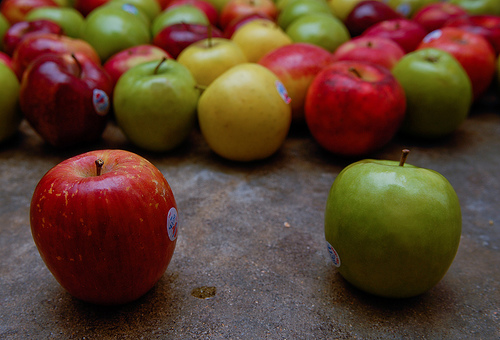
As someone who tries to eat as locally as possible, I have a terrible confession to make. For the last month, I have been eating - nay, actively seeking out - apples from New Zealand. And you know what? I'm not sorry.
Here is how the apple production cycle works: every fall, apples come into season. In my home state of Washington, where we grow the best apples in the nation, they are ripe between late August (my earliest apple tree is just ripening now) and late October.
How, then, do grocery stores keep apples on the shelves all year long? They keep them in the fridge. The American produce distribution system has a complex "vast, distributed winter" where apples are warehoused and distributed year round so that they are always available.
This means that at this point in the year, American apples you find at the grocery store are almost a year old, having been picked in fall of 2012. And while a lot of people can't tell the difference, I definitely can. The older a fruit gets, the mealier it is. The more likely it is to be studded with tiny bruises. And the less sweet it is, since these apples never had a chance to ripen on time. Or maybe the sugars break down slowly in storage. I don't know, but I literally eat an apple a day all year round, and trust me: I can tell.
Enter the New Zealand apple. New Zealand has pretty much the same exact growing conditions as Washington, but it's on the opposite side of the planet. Thus, our spring is their fall, which means that the New Zealand crops peak right as our stored apples are getting truly terrible.
And if you think about it, the carbon footprint of eating an apple shipped across the planet is probably about the same as an apple that's been refrigerated for 10 months, right?!
Image courtesy Flickr/msr

0 comments